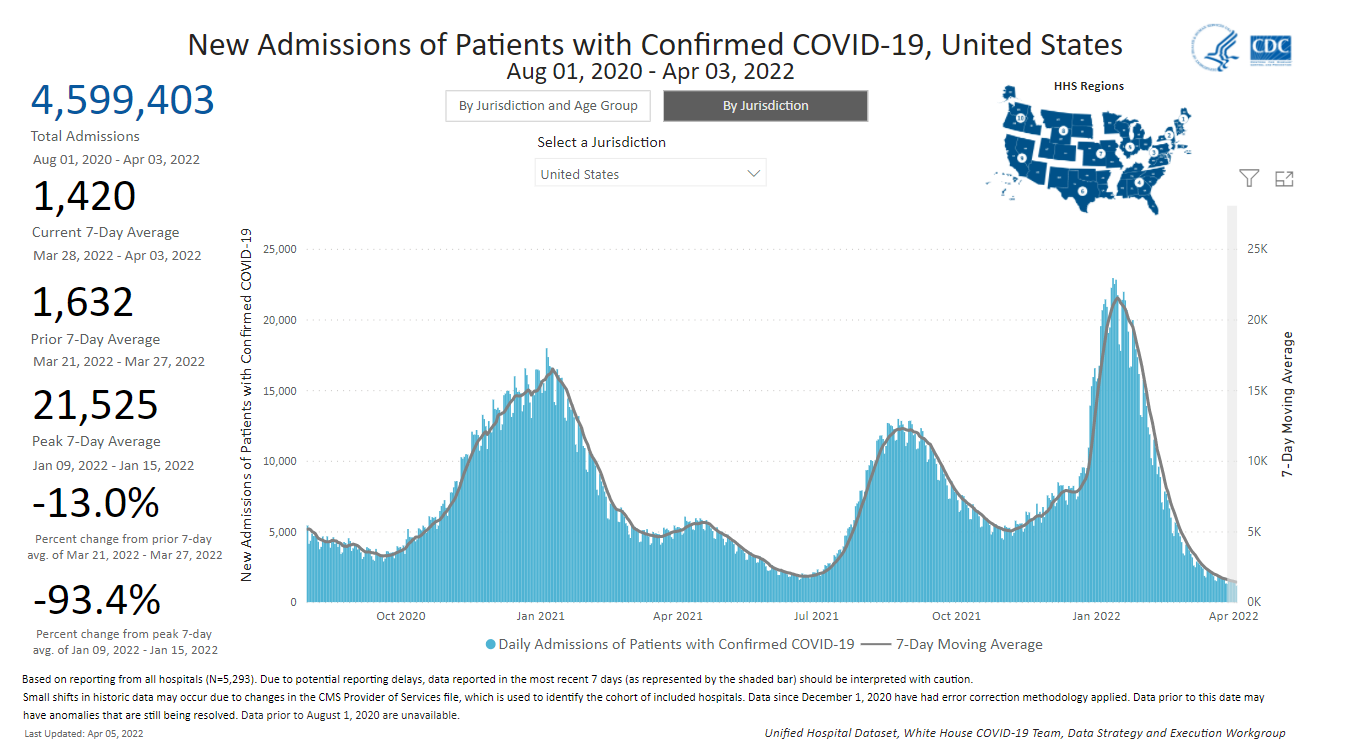
Lauren Dempsey, MS in Biomedicine and Law, RN, FISM News
[elfsight_social_share_buttons id=”1″]
COVID-19 hospitalizations are at the lowest level on record according to the CDC. While this has given many hope that the country may finally be putting the pandemic in the rearview mirror, several officials have tried to damper the positive news.
For the last two years, case rates and hospitalizations have been tracked as indicators of severe illness and to help identify areas of transmission rates within communities. While these numbers are important, it is also important to note that recent research estimates that in both adult and pediatric hospitalizations, up to 40% of cases are due to incidental findings.
Current numbers show that hospitalizations are just below 10,000 per day across the country, showing a steady decline and the lowest levels since the start of the beginning of the pandemic.

While the decreasing numbers are a hopeful sign for many, some researchers are saying that lifting pandemic mitigation strategies and returning to normal will come at a cost.
A new study published in the JAMA Health Forum used a computer simulation to predict what will happen if restrictions are lifted based on several different scenarios and variables.
The researchers said that based on a variety of factors on expectations that variants will emerge and mutate, we may see as few as 15,000 deaths or as many as 300,000 deaths over the next twelve months. By lifting restrictions, the researchers estimate that it will cause a “rebounding peak incident” which will result in “increased COVID-19 mortality.”
However, predictive models have proved to be wrong throughout the pandemic. A wide variety of public health agencies used mathematical models to create and enforce public policies, which in hindsight misled officials. One such simulation estimated that if Georgia opened in April of 2020 the state would see over 23,000 deaths in the following month, yet in actuality, the state had 896 deaths.
Researchers used the same computer simulations to estimate what the effect would be across the country, specific to each state and time period that restrictions were lifted. The models estimated that Florida, Illinois, Michigan, Tennessee, and Washington would have a peak of deaths that stayed fairly consistent despite a wide range in longevity and severity of restrictions in these states. The model indicated that prolonging restrictions would have no impact on COVID-19 mortality, largely due to vaccination rates.
Dr. Benjamin Linas, co-lead author of the study and a professor of medicine at the Boston University School of Medicine said for these states, “the thing to change is that background of vaccination and immunity, and that’s the way out.” In Massachusetts, New Jersey, New York, and Ohio, the model predicted, in fact, that prolonging COVID-19 restrictions resulted in higher peak incident deaths when the restrictions were removed.
Linas guesses that this may be due to waning levels of natural immunity. The authors conclude that moving forward will require a risk-benefit analysis and funding to improve public health data surveillance and improved response to future threats.
The current hospitalization rate reveals a 90% decrease from the start of the pandemic, but government health organizations remain steadfast in warning against considering the pandemic “over.”
According to Margaret Harris, a World Health Organization spokesperson, the pandemic is “far from over” and added, “we are definitely in the middle of the pandemic.” Many experts and health officials point to BA.2, the most recent circulating variant, as a reason to still be cautious. This Omicron sub-variant is now the dominant form of SARS-CoV-2 in the U.S. and Europe.
Some studies have shown that this sub-variant has the ability to evade vaccines, much like the Omicron variant. However, experts still continue to recommend vaccination and boosters as the best method of protection.
